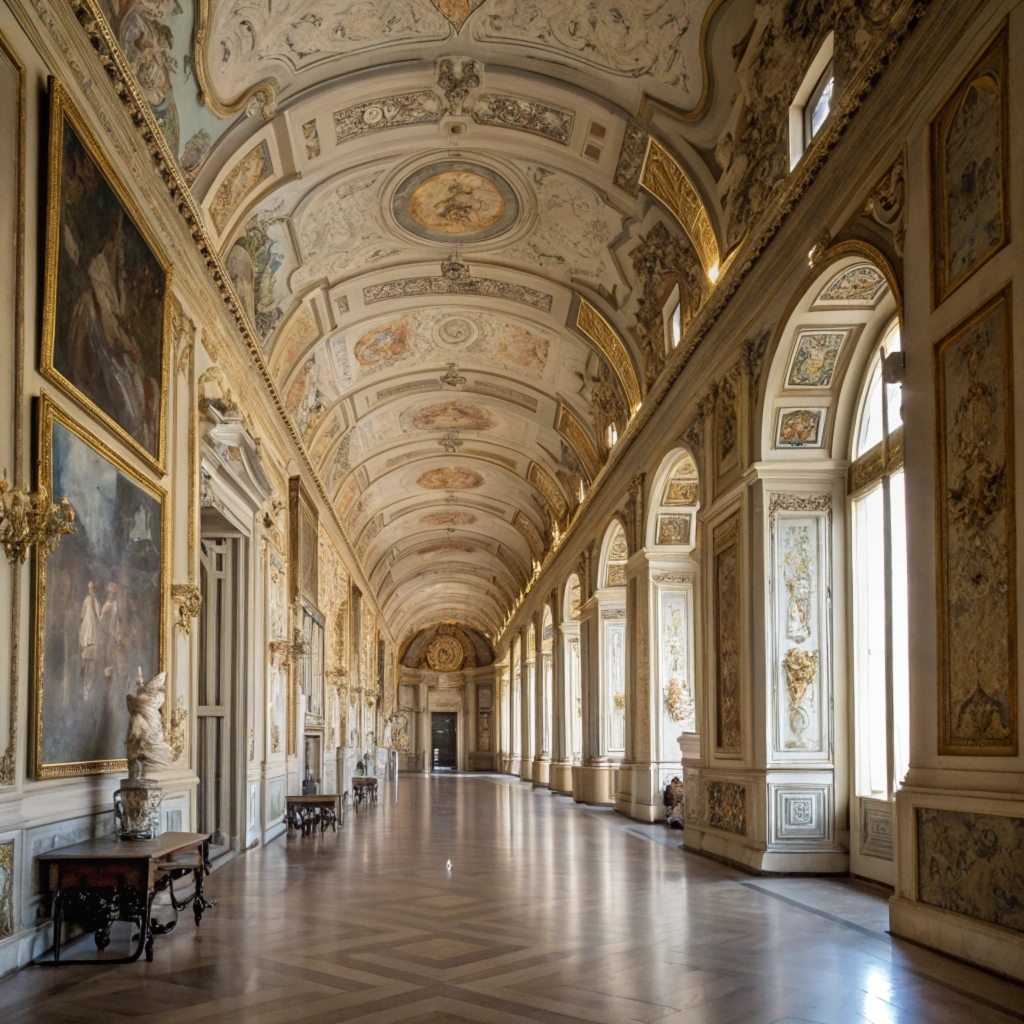
Top 5 Most Beautiful Art Galleries in ROME
Rome, a true open-air museum, is full of art galleries offering unique collections and invaluable masterpieces. While the Italian capital is famous for its ancient monuments, its art galleries are a must-see for culture enthusiasts. From Renaissance treasures to contemporary works, these exhibition spaces reveal the talent of the greatest artists such as Raphael, Caravaggio, Bernini and many others. Whether you are passionate about classical or modern art, the diversity of Roman galleries will enchant you through varied and fascinating collections.
Follow our guide to the best Art Galleries in Rome to plan your stay in the Italian capital.
- Borghese Gallery Where Art and Nature Merge
- What are the 10 must-see works at the Borghese Gallery?
- Do you need to book tickets in advance to visit the Borghese Gallery?
- How much time should you allow to visit the Borghese Gallery?
- Are guided tours available for the Borghese Gallery?
- Doria Pamphilj Gallery A Treasure in a Renaissance Palace
- What are the 10 must-see works at the Doria Pamphilj Gallery?
- Do you need to book tickets in advance to visit the Doria Pamphilj Gallery?
- How much time should you allow to visit the Doria Pamphilj Gallery?
- Are guided tours available for the Doria Pamphilj Gallery?
- National Gallery of Ancient Art – Top 6 Works to See at the Barberini Palace in Rome A Journey from Caravaggio to Raphael
- What are the 6 must-see works at the Barberini Palace in Rome?
- Do I need to book tickets in advance to visit the Barberini Palace in Rome?
- How much time should I plan to visit the Barberini Palace in Rome?
- Are guided tours available for the Barberini Palace in Rome?
- National Gallery of Modern and Contemporary Art Modernity at its best
- What are the 6 must-see works at the National Gallery of Modern and Contemporary Art in Rome?
- Do I need to book tickets in advance to visit the National Gallery of Modern and Contemporary Art in Rome?
- How much time should I plan to visit the National Gallery of Modern and Contemporary Art in Rome?
- Are guided tours available for the National Gallery of Modern and Contemporary Art in Rome?
- Spada Gallery Between Reality and Illusion
- What are the 6 must-see works at the Spada Gallery in Rome?
- Do you need to book tickets in advance to visit the Galleria Spada in Rome?
- How much time should you allow to visit the Galleria Spada in Rome?
- Are guided tours available for the Galleria Spada in Rome?
- What is the best time to visit an art gallery in Rome?
- Can you take photos inside art galleries in Rome?
- Which art galleries in Rome are less known but worth a visit?
- Are there specific days or times when entry to art galleries is free in Rome?
Borghese Gallery
Where Art and Nature Merge
Are you passionate about art and charmed by nature? In that case, the Borghese Gallery is your dream destination. Located in an enchanting park, this gallery is filled with breathtaking works from the Baroque and Renaissance periods. Legendary artists such as Bernini, Caravaggio, and Titian are represented there.

What are the 10 must-see works at the Borghese Gallery?
Here are 10 essential works to see at the Borghese Gallery:
- “Apollo and Daphne” by Bernini
This sculpture shows Daphne transforming into a tree to escape Apollo. Bernini captures this moment with incredible realism and movement in marble. - “David” by Bernini
Unlike other representations of David, Bernini shows him in action, ready to launch his sling. The tension and emotion in this sculpture are striking. - “Pauline Bonaparte” by Canova
This sculpture depicts Pauline Bonaparte, Napoleon’s sister, lying sensually as a victorious Venus. The marble work, which resembles skin, is impressive. - “The Deposition” by Raphael
This religious painting is a major work of the Renaissance, showing a poignant scene of Christ being taken down from the cross. The use of colors and composition demonstrates Raphael’s expertise. - “The Lady with the Unicorn”
This enigmatic portrait shows a young woman holding a unicorn, a symbol of purity. Attributed to Raphael, this work fascinates with its mystery and finesse. - “Young Bacchus” by Caravaggio
In this painting, Caravaggio shows Bacchus, the god of wine, in a relaxed posture. The use of chiaroscuro and the realism of the details make this work a masterpiece of the Baroque. - “Saint Jerome” by Caravaggio
This painting shows Saint Jerome translating the Bible. Caravaggio excels here in the use of light contrasts and the expressiveness of details. - “The Virgin and Child with Saint John” by Rubens
This painting depicts the Virgin Mary, the Child Jesus, and the infant Saint John the Baptist. Rubens is distinguished by his vibrant use of colors and the expression of tenderness between the characters. - “Danaë” by Correggio
Danaë is a figure from Greek mythology that Correggio represents with gentleness and sensuality. The luminosity and golden tones of the work make it a remarkable example of Mannerist painting. - “Portrait of a Young Man” by Bronzino
This portrait shows the elegance and dignity of the young man, with realistic details in clothing and attitude. Bronzino demonstrates his talent for formal portraiture at the Florentine court.
These works are testaments to the incredible artistic richness of the Borghese Gallery, covering several periods and artistic styles.
Do you need to book tickets in advance to visit the Borghese Gallery?
Yes, you must book your tickets in advance to visit the Borghese Gallery. Due to the limited visitor capacity (only 360 people at a time), entries are strictly controlled, and it is often difficult to obtain tickets at the last minute. Visits are organized in two-hour time slots, so it is best to book online several days, or even weeks, before your visit, especially during peak season. Booking in advance guarantees your access to this must-see museum.
How much time should you allow to visit the Borghese Gallery?
The visit to the Borghese Gallery is limited to two-hour slots per group. This time is usually sufficient to admire the main collections, including the masterpieces of Caravaggio, Bernini, and Raphael. If you are an art enthusiast, two hours may seem a little short, but this is the time allowed for each visitor. It is therefore advisable to arrive on time to make the most of the allocated time.
Are guided tours available for the Borghese Gallery?
Yes, it is possible to book guided tours for the Borghese Gallery. These tours may be offered by private guides or specialized agencies. Guided tours allow you to discover the museum’s major works in more depth, including the sculptures of Bernini and the paintings of Caravaggio, with detailed explanations. Audio guides are also available for rent at the museum entrance for those who prefer to explore at their own pace while having additional information.
Book your tickets (tickets and guided tours) for the Borghese Gallery on Tripwizy now
Doria Pamphilj Gallery
A Treasure in a Renaissance Palace
Nestled in the heart of a palace that breathes Renaissance, this private collection is a jewel of Rome. Imagine yourself strolling through the history-laden corridors, your footsteps echoing on the ancient slabs, while your gaze is captivated by works that have spanned the centuries.
Learn all about the Doria Pamphilj Gallery + Book your tickets
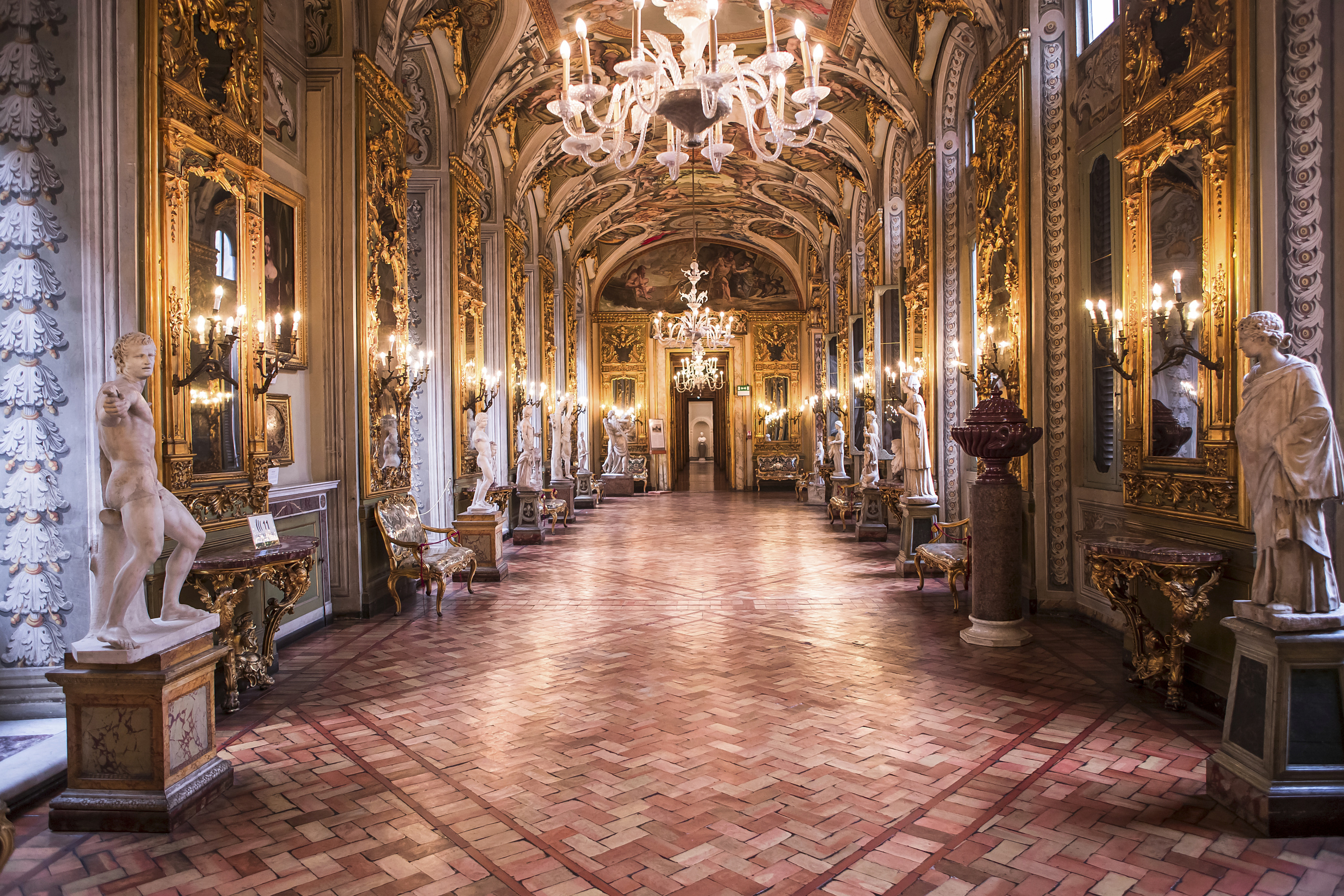
What are the 10 must-see works at the Doria Pamphilj Gallery?
Here are 10 essential works to see at the Doria Pamphilj Gallery:
- “Portrait of Pope Innocent X” by Velázquez
This portrait of Pope Innocent X is one of Velázquez’s most famous works. The striking realism and intensity of the Pope’s gaze make it a painting of great psychological power. - “Rest on the Flight into Egypt” by Caravaggio
This painting depicts the Holy Family resting during their flight into Egypt. Caravaggio uses his famous chiaroscuro to capture the intimacy and tranquility of the scene. - “Penitent Magdalene” by Titian
This painting of the Penitent Magdalene is an emotional and spiritual work, where the light highlights the beauty and pain of the saint. Titian demonstrates his mastery of colors and contrasts. - “The Baptism of Christ” by Tintoretto
This dramatic scene of the baptism of Christ is full of movement and dynamism. Tintoretto creates a complex composition with divine plays of light. - “The Triumph of David” by Guercino
This painting depicts David carrying the head of Goliath as a sign of victory. The work perfectly illustrates the Baroque style with its dynamism and bright colors. - “The Departure of the Queen of Sheba” by Claude Lorrain
In this work, Claude Lorrain shows a majestic landscape bathed in golden light, typical of his style. The biblical scene is almost secondary to the splendor of the landscape. - “Judith and Holofernes” by Caravaggio
This violent painting shows Judith decapitating Holofernes with great intensity. Caravaggio demonstrates his ability to capture moments of dramatic tension and raw realism. - “Saint John the Baptist” by Carracci
This painting depicts Saint John the Baptist in a contemplative posture, surrounded by nature. The artist captures spirituality and serenity in a balanced composition. - “Landscape with the Return of the Ark” by Poussin
Poussin uses classical landscapes here to illustrate a biblical scene with great precision. The attention to detail in the natural setting is an example of his rigorous approach to classicism. - “Portrait of Camillo Pamphilj” by Velázquez
This portrait of Camillo Pamphilj, a member of the Doria Pamphilj family, shows all the subtlety and elegance of Velázquez. The artist excels in the representation of textures and subtle expressions of the model.
These works, representative of different styles and eras, illustrate the richness and artistic diversity of the Doria Pamphilj Gallery, a true jewel of Roman heritage.
Do you need to book tickets in advance to visit the Doria Pamphilj Gallery?
It is recommended to book your tickets in advance to visit the Doria Pamphilj Gallery, although it is not always mandatory. During peak season, visits can be busier, and booking allows you to guarantee your entry, avoid queues, and optimize your time on site. Online booking is easy and ensures you fully enjoy this magnificent private collection.
How much time should you allow to visit the Doria Pamphilj Gallery?
Plan on approximately 1.5 to 2 hours for a complete visit to the Doria Pamphilj Gallery. This will allow you to discover the many works of art, including those by Velázquez, Caravaggio, and Titian, without feeling rushed. If you are passionate about art, you may wish to stay longer to admire the details of this magnificent private collection.
Are guided tours available for the Doria Pamphilj Gallery?
Yes, guided tours are available for the Doria Pamphilj Gallery. You can book private or group tours with specialized guides who will provide detailed explanations of the history of the works and the Pamphilj family. Audio guides are also available for those who prefer to explore at their own pace while still receiving enriching information about the collection.
Book your tickets (tickets and guided tours) for the Doria Pamphilj Gallery on Tripwizy now
National Gallery of Ancient Art – Top 6 Works to See at the Barberini Palace in Rome
A Journey from Caravaggio to Raphael
Prepare to be transported back to the time when Raphael and Caravaggio were shaking up artistic conventions. The Barberini Palace, the sumptuous residence of one of Italy’s most influential families, houses the National Gallery of Ancient Art. Each room tells a story, each painting is a window into the past.
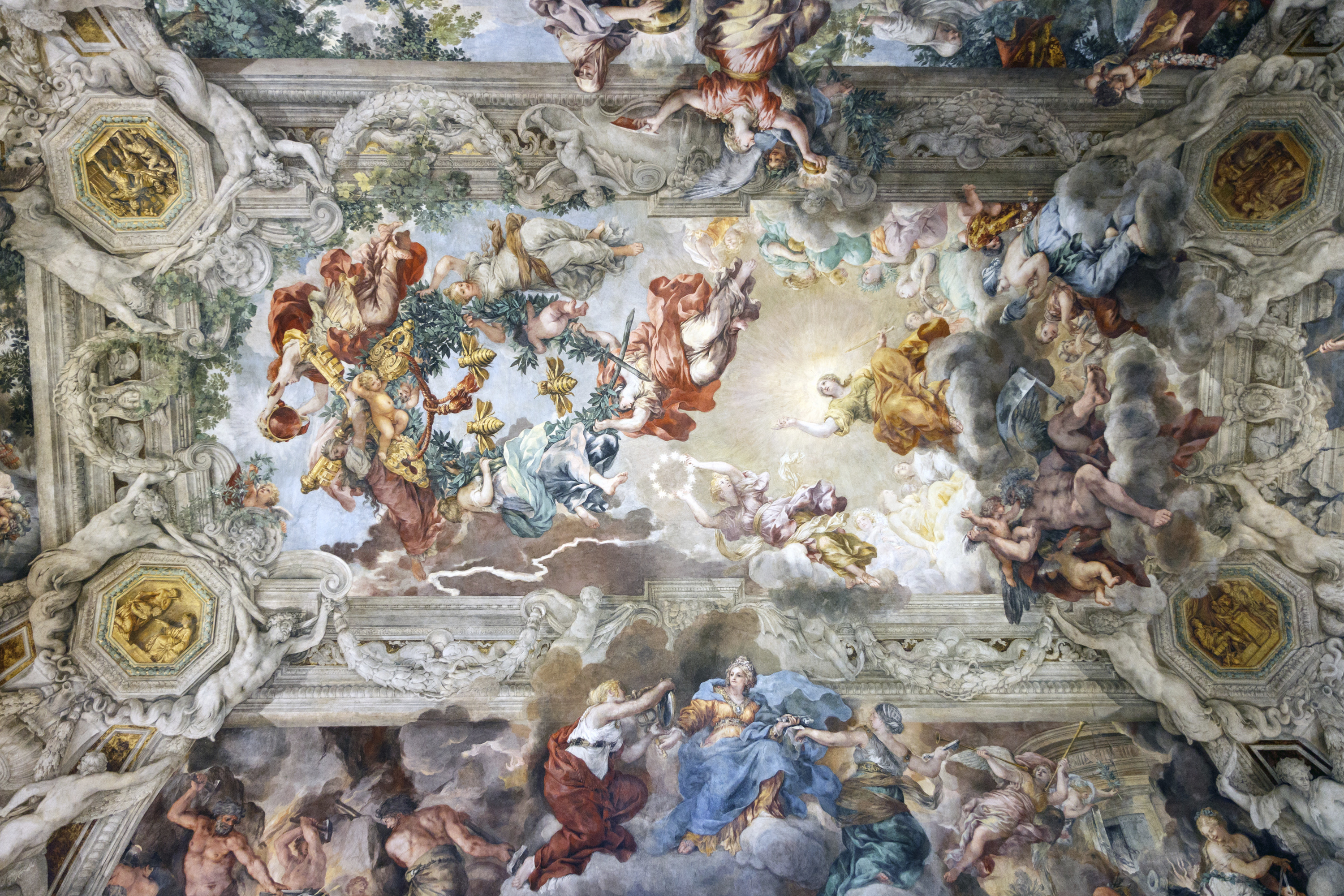
What are the 6 must-see works at the Barberini Palace in Rome?
Here are 6 must-see works at the Barberini Palace in Rome:
- “La Fornarina” by Raphael
This enigmatic portrait depicts a young woman, supposedly Raphael’s lover. The fineness of the details and the softness of the face make it a masterpiece of the Italian Renaissance. - “Judith Slaying Holofernes” by Caravaggio
Caravaggio captures all the violence and intensity of the biblical scene with his spectacular use of chiaroscuro. The brutal realism makes this work a perfect example of the Caravaggesque technique. - “Narcissus” by Caravaggio
This painting shows Narcissus contemplating his reflection, illustrating beauty and vanity. Caravaggio uses powerful contrasts here to make the classical myth striking. - “Triumph of Divine Providence” by Pietro da Cortona
This monumental fresco adorns the main ceiling of the palace and is a masterpiece of Baroque art. It represents a complex allegory of the glory of the Barberinis, filled with mythological and divine figures. - “Portrait of Urban VIII” by Bernini
This marble bust of Pope Urban VIII shows Bernini’s talent for capturing details and expressiveness. The work highlights the power and authority of Pope Barberini. - “Venus and Adonis” by Titian
This mythological painting shows a dramatic scene between Venus and Adonis. The rich colors and dynamic energy of the painting make this work a must-see in the palace.
These works cover different artistic styles, from Mannerism to Baroque art, and testify to the richness of the Barberini Palace.
Do I need to book tickets in advance to visit the Barberini Palace in Rome?
It is not mandatory to book your tickets in advance for the Barberini Palace, but it is advisable, especially during peak season. By booking online, you can avoid queues and ensure quick access to the museum.
How much time should I plan to visit the Barberini Palace in Rome?
It is recommended to allow about 2 to 3 hours to visit the Barberini Palace. This time allows you to discover the main works, including those by Raphael and Caravaggio, as well as the superb ceiling fresco by Pietro da Cortona.
Are guided tours available for the Barberini Palace in Rome?
Yes, guided tours are available for the Barberini Palace. You can book a tour with a guide to explore the history of the palace and the masterpieces it houses. Audio guides are also available for a self-guided and enriching visit.
Book your tickets (tickets and guided tours) for the Barberini Palace on Tripwizy now
National Gallery of Modern and Contemporary Art
Modernity at its best
If you have an appetite for contemporary art, the National Gallery of Modern and Contemporary Art is a must-see stop on your Roman journey. Here, the works speak the language of modernity and break the boundaries of convention. Masterpieces of modern and contemporary installations will make you experience art in a new light.
Learn all about the National Gallery of Modern and Contemporary Art + Book your tickets
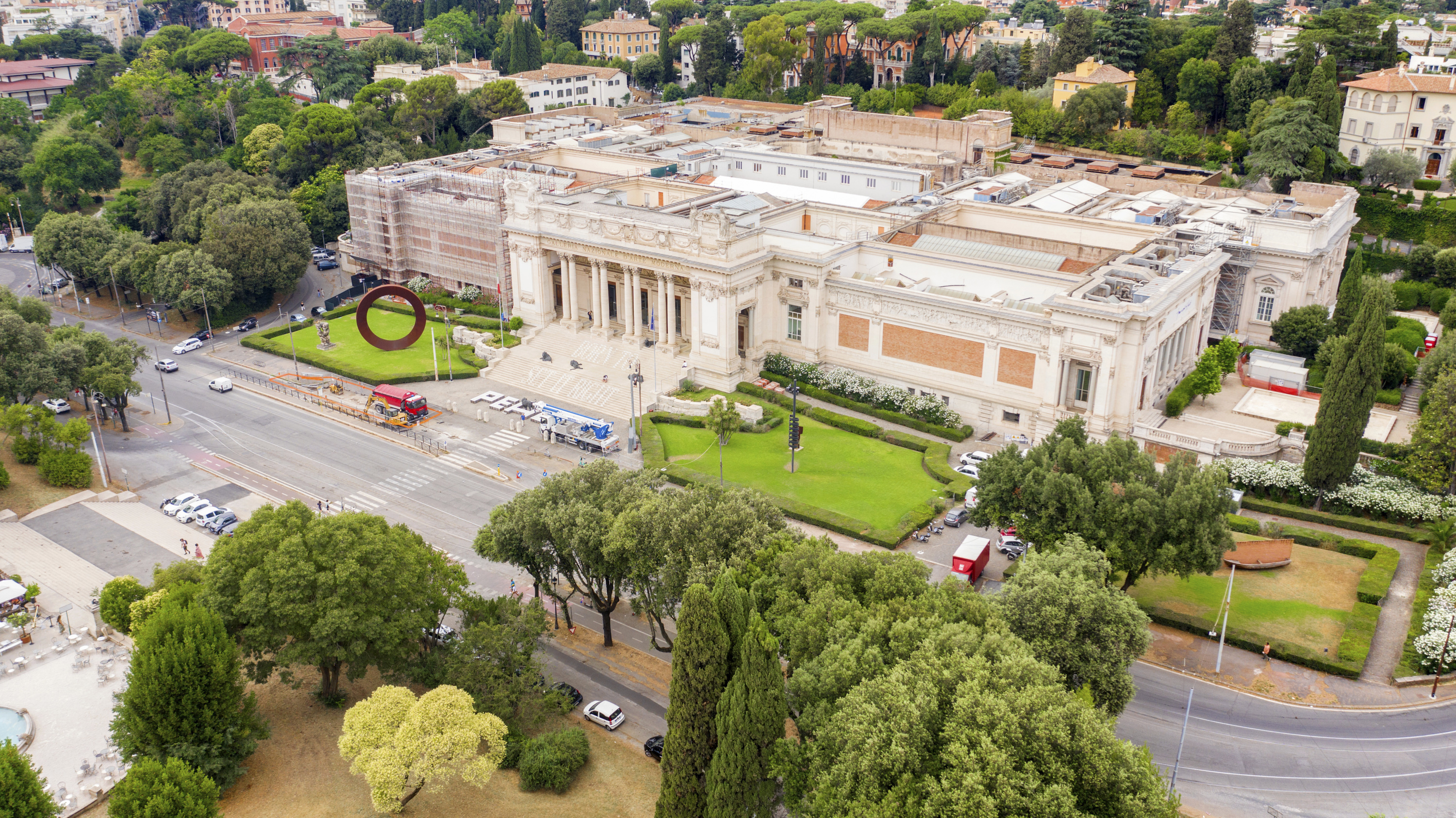
What are the 6 must-see works at the National Gallery of Modern and Contemporary Art in Rome?
Here are 6 must-see works at the National Gallery of Modern and Contemporary Art in Rome:
- “The Thinker” by Rodin
This iconic sculpture represents a man in deep thought, embodying the human intellect. The strength and depth of the model make it one of the major works of modernism. - “The Three Ages of Woman” by Gustav Klimt
This celebrated painting explores the cycles of life through three female figures, illustrating youth, motherhood, and old age. Klimt’s golden motifs and details make it a Symbolist masterpiece. - “Amor and Psyche” by Antonio Canova
Canova captures here the tender moment when Psyche is awakened by Cupid’s kiss. This Neoclassical masterpiece impresses with the softness of the marble and the realism of the emotions. - “Nightmare and Dream” by Giorgio de Chirico
De Chirico, a figure of Surrealism, explores dreamlike and mysterious landscapes in this work. His enigmatic compositions and unreal perspectives give rise to numerous interpretations. - “Grande Sfera” by Arnaldo Pomodoro
This monumental bronze sculpture is one of the most remarkable contemporary works in the museum. The sphere, both smooth and broken, symbolizes the tension between perfection and chaos. - “The Dance of the Hours” by Gaetano Previati
Representing the passage of time through dancing female figures, this work is distinguished by the innovative use of color and movement, an example of Italian Divisionism.
These works offer a glimpse into the museum’s artistic richness, covering different styles and periods.
Do I need to book tickets in advance to visit the National Gallery of Modern and Contemporary Art in Rome?
It is not mandatory to book your tickets in advance to visit the National Gallery of Modern and Contemporary Art in Rome, but it is recommended, especially during peak season. Online booking saves you time and guarantees access to the museum without queuing.
How much time should I plan to visit the National Gallery of Modern and Contemporary Art in Rome?
It is recommended to allow between 2 and 3 hours to explore the gallery. This will allow you to discover the main works, including those by Klimt, Canova and de Chirico, without feeling rushed, while enjoying the permanent collections and temporary exhibitions.
Are guided tours available for the National Gallery of Modern and Contemporary Art in Rome?
Yes, guided tours are available for the National Gallery of Modern and Contemporary Art in Rome. You can book a tour with a guide to deepen your understanding of the museum’s major works, or opt for audio guides, available at the entrance for exploration at your own pace.
Spada Gallery
Between Reality and Illusion
For a truly unique experience, the Spada Gallery awaits you. This isn’t just a museum, it’s a place where Borromini’s optical illusions challenge your perception. The artworks here are staged in a way that will surprise you, make you question things, and make you doubt your senses.
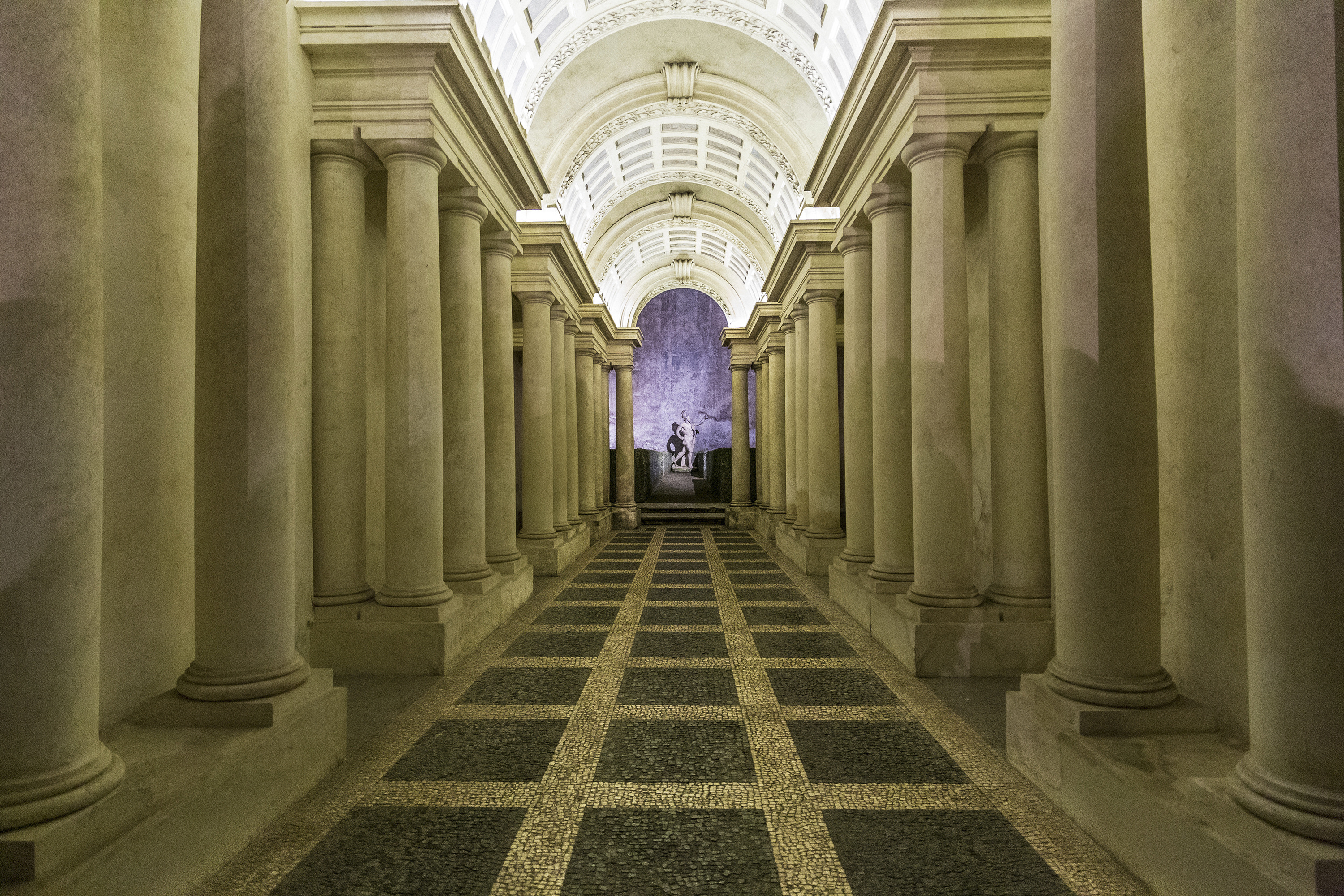
What are the 6 must-see works at the Spada Gallery in Rome?
Here are 6 must-see works at the Galleria Spada in Rome:
- “The Perspective” by Francesco Borromini
This architectural optical illusion is the gallery’s most famous masterpiece. Borromini designed a corridor that appears much longer than it is thanks to a perfect mastery of perspective. - “Portrait of a Musician” by Titian
This realistic portrait shows a musician in an elegant posture, with meticulous details. Titian’s talent for capturing subtle expressions makes this work particularly captivating. - “David with the Head of Goliath” by Guercino
This Baroque work shows the triumphant David with the head of Goliath, in a dramatic scene. The power of the composition and the play of light create a strong visual impact. - “Cardinal Bernardino Spada” by Guido Reni
This portrait of the gallery’s founder reflects great nobility and dignity. Reni highlights the details of the clothing and the facial expression, emphasizing the cardinal’s stature. - “The Baptism of Christ” by Domenichino
This religious scene is painted with a calming composition and soft colors. Domenichino captures the serenity of the moment with a refined classical style. - “The Death of Dido” by Guercino
This dramatic painting tells the tragic end of Dido, Queen of Carthage. Guercino uses intense tones and bright contrasts to emphasize the emotion of this mythological scene.
These works and this unique perspective make the Galleria Spada a must-see for art and architecture enthusiasts.
Do you need to book tickets in advance to visit the Galleria Spada in Rome?
It is not essential to book your tickets in advance for the Galleria Spada, but it can be useful during peak season. As the gallery is smaller than other museums in Rome, it is less crowded, and it is usually possible to buy tickets on site.
How much time should you allow to visit the Galleria Spada in Rome?
Allow about 1 to 1.5 hours to visit the Galleria Spada. This will allow you to appreciate the works of art on display as well as the famous Borromini perspective, while giving you time to explore the various rooms of this intimate gallery.
Are guided tours available for the Galleria Spada in Rome?
Yes, private guided tours are available for the Galleria Spada, and can be booked through specialized agencies. You can also rent an audio guide at the entrance to explore the gallery at your own pace, while discovering the history of the works and the Spada collection.
Book your tickets (tickets and guided tours) for the Galleria Spada on Tripwizy now
What is the best time to visit an art gallery in Rome?
The best time to visit an art gallery in Rome is during the low season, between November and February, when there are fewer tourists. During peak season, prefer weekday or morning visits to avoid crowds and enjoy a more serene experience. This is even truer for the Borghese Gallery, which attracts around 500,000 visitors per year.
Can you take photos inside art galleries in Rome?
In most art galleries in Rome, it is allowed to take photos without flash. This is the case, for example, at the Borghese Gallery. However, some works or temporary exhibitions may be subject to specific restrictions, and photos may be completely prohibited. It is always advisable to check the regulations of each gallery at the entrance, and to respect the instructions to preserve the works of art.
Which art galleries in Rome are less known but worth a visit?
The Corsini Gallery, located in the Trastevere district, offers a beautiful collection of Baroque paintings, with works by masters such as Rubens and Murillo.
The Villa Farnesina, also in Trastevere, is a Renaissance villa with breathtaking frescoes by Raphael and his school.
Finally, the Palazzo Altemps Museum of Ancient Art exhibits classical sculptures, including Roman and Greek masterpieces, in an elegant setting.
These less frequented galleries allow you to discover artistic treasures while avoiding the large crowds of the more famous museums.
Are there specific days or times when entry to art galleries is free in Rome?
Yes, some art galleries in Rome offer free admission days, often the first Sunday of each month. This is the case, for example, for the Palazzo Barberini, and several other national museums participate in this initiative. It is advisable to check the times and conditions on their official websites before your visit, as free days can lead to significant crowds.
Rome is not just its historical monuments and majestic churches. By strolling through its art galleries, you immerse yourself in the heart of the artistic history of Italy and the world. Each gallery tells a different story through the centuries, whether through Renaissance frescoes or Baroque sculptures. Take the time to admire these exceptional works and let yourself be carried away by the beauty that inhabits every corner of these exhibition spaces. Rome, the Eternal City, continues to fascinate with its incredible artistic richness, a must-see.
Each visit is unique and your experience could inspire other art lovers. Feel free to share in the comments your favorites, your unexpected discoveries, or even your tips for fully enjoying these exceptional places. Your feedback is valuable and helps enrich the community of art enthusiasts.
To extend your cultural exploration in Rome, we advise you to discover the 4 Exceptional Contemporary Art Museums in Rome and also the Thematic Museums and Special Collections of Rome to not miss anything of the wonders that the city has to offer.
Each visit to these emblematic places in Rome is a promise of wonder, a pact with history. So don’t wait any longer, Rome is ready to unveil its most intimate artistic secrets. Fill up on culture and emotions, and above all, don’t forget to share your unforgettable moments with us!



